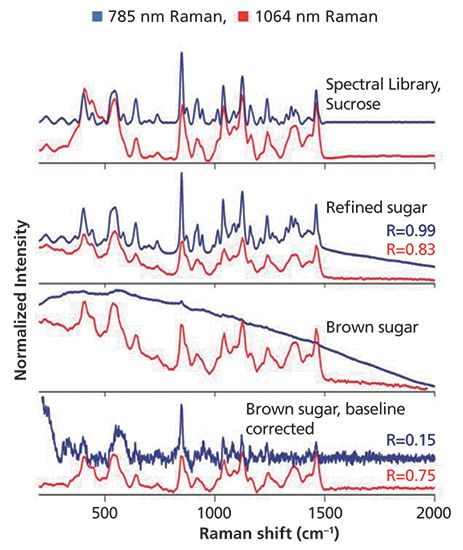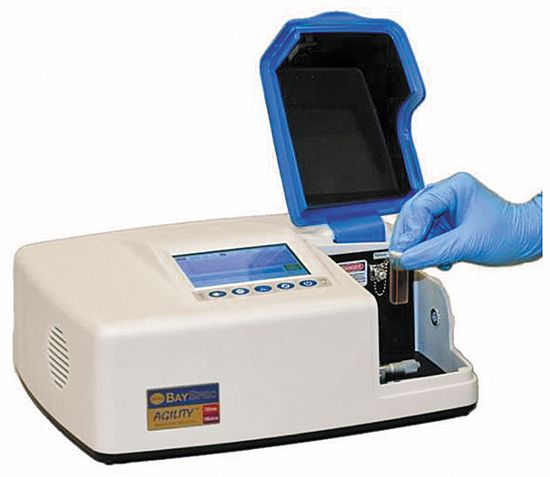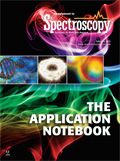Two Excitation Wavelengths Are Better than One
Application Notebook
Portable 785 nm and 1064 nm excitation wavelength dispersive Raman instruments have proven their worth in materials identification, especially for forensics, pharmaceutical raw materials inspection, and first responders.
The ability to use two Raman excitation wavelengths in a single instrument improves both applicability and specificity on real-world samples. The gains are more than just a simple "sum of parts."
Portable 785 nm and 1064 nm excitation wavelength dispersive Raman instruments have proven their worth in materials identification, especially for forensics, pharmaceutical raw materials inspection, and first responders. Shorter wavelength excitation results in more efficient Raman scattering and allows the instrument designer to reduce the size and weight of the instrument. Longer wavelength excitation avoids exciting fluorescence that masks the Raman spectrum but the emphasis is on maximizing instrument throughput. Both approaches seek to maximize sensitivity and selectivity by different means.
Raman libraries are typically built using 1064 nm excitation FT-Raman instruments on purified materials and provide high-resolution, low-noise spectra. For portable applications, speed, weight and ruggedness, and the ability to match FT-Raman libraries is ideal. Obtaining spectra quickly with a short-wavelength excitation Raman with baseline correction for fluorescence usually provides results about 70–80% of the attempts at measurement. Large amounts of fluorescence result in degraded match quality. Long wavelength excitation, while less efficient at creating Raman scattered photons, can produce fluorescence-free spectra for even colored materials. The identification rate for long-wavelength Raman is believed to be above 80%. Being able to use the best technique for each sample would be ideal.
An instrument designed around dual wavelength excitation can provide enhanced value beyond having two independent Raman instruments. The overall cost of the instrument can be significantly lower due to shared components between the two laser and spectrometer combinations. It also allows integration benefits like a common user interface, shared Raman libraries and accessories, overlapping measurement volumes, and even eliminates the need for recalibration when switching between spectrometers. With this level of integration, accuracy is maximized under all conditions.

Figure 1: Comparison of sucrose, refined sugar, and brown sugar using two Raman excitation wavelengths.
Results
As shown in Figure 1, the match quality for the 785 nm excitation spectrum is superior to the 1064 nm excitation spectrum for refined sugar because of the low noise and narrow line shapes. For brown sugar, a noisy spectrum is obtained using 785 nm excitation, but a definitive match to sucrose is seen with 1064 nm excitation despite the additional colored compounds.

Figure 2: BaySpec’s Agility™ 785/1064 dualband transportable Raman spectrometer.
References
(1) BaySpec Factory Library (2014).
(2) D.D. Baunsgaard, L Nørgaard, and M.A. Godshall, J. Agric. Food Chem. 49, 1687–1694 (2001).
BaySpec, Inc.
1101 McKay Drive, San Jose, CA 95131
tel. (408) 512-5928
Website: www.bayspec.com
















